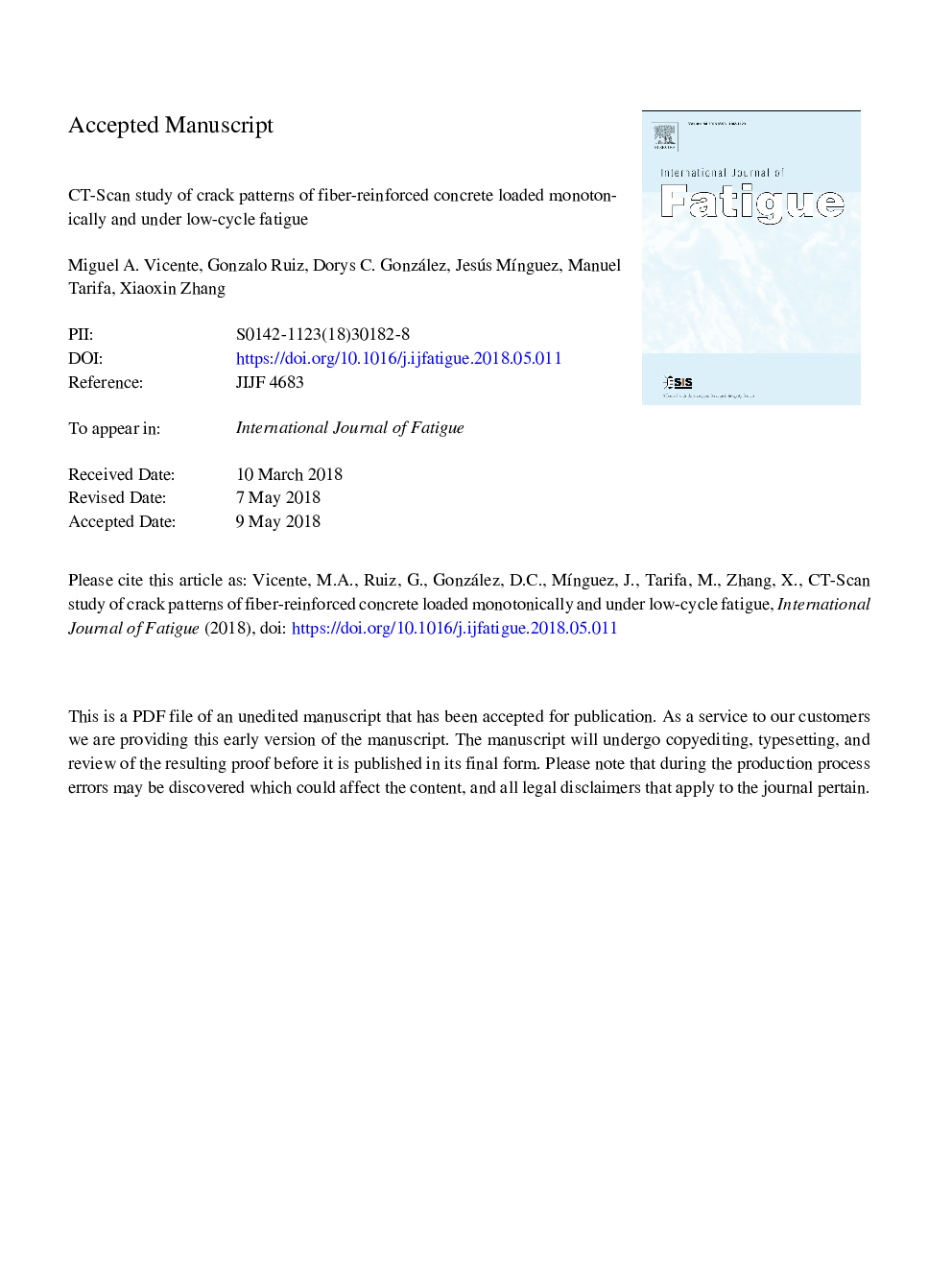| Article ID | Journal | Published Year | Pages | File Type |
|---|---|---|---|---|
| 7171345 | International Journal of Fatigue | 2018 | 37 Pages |
Abstract
Most fatigue models for concrete under compression assume, as an axiom, that compressive tests are a limit case for a cyclic test where failure is achieved in the first cycle. This is supported by the fact that the crack patterns obtained in both cases are similar to the naked eye. This paper focuses on verifying whether this observation is correct or not. For that, we used a Computed Tomography Scan together with digital image processing to obtain 3D damage maps of tested 40â¯mm edge-length cubes made of steel fiber-reinforced concrete. The cubes were classified in series according to the type of loading: intact, monotonic and cyclic. They were scanned to acquire their 3D damage maps. Additionally, a specific post-processing algorithm was developed by the authors to compare the different crack patterns. The results show that average damage maps for monotonically and cyclically-tested cubes are statistically similar, thereby confirming the initial hypothesis for steel fiber-reinforced concrete. Furthermore, damage distribution near the platens apparently depends on whether it is a fixed platen or it is adjustable to the specimen surface due to a spherical seat.
Keywords
Related Topics
Physical Sciences and Engineering
Engineering
Mechanical Engineering
Authors
Miguel A. Vicente, Gonzalo Ruiz, Dorys C. González, Jesús MÃnguez, Manuel Tarifa, Xiaoxin Zhang,
